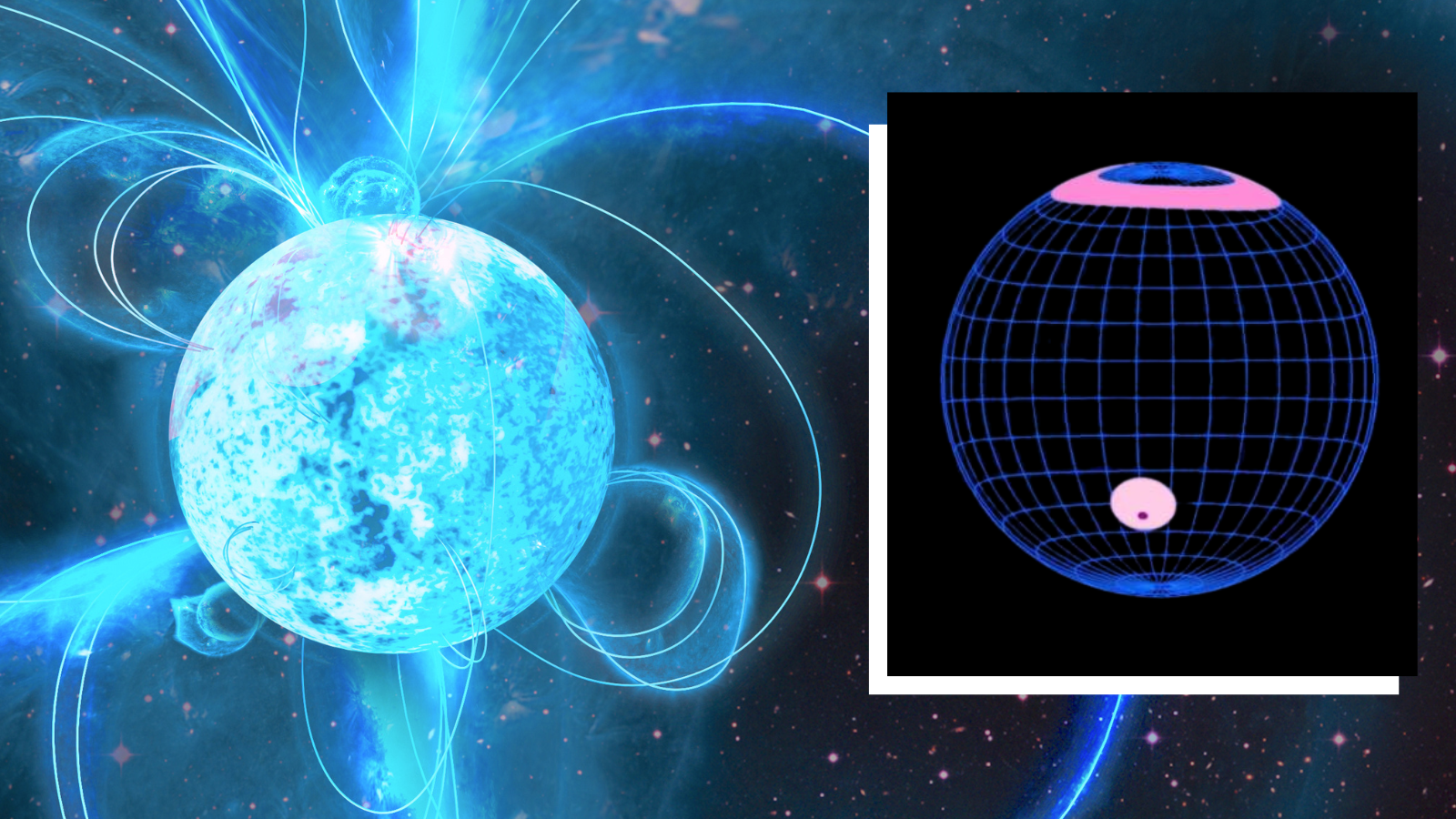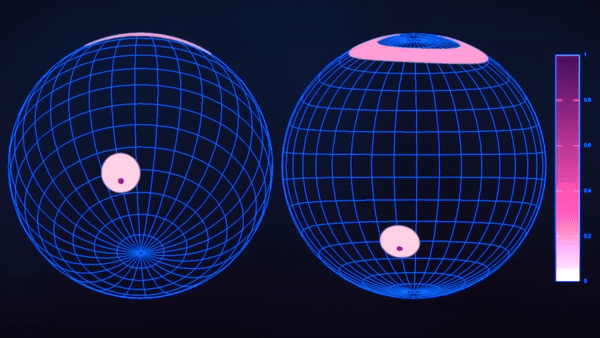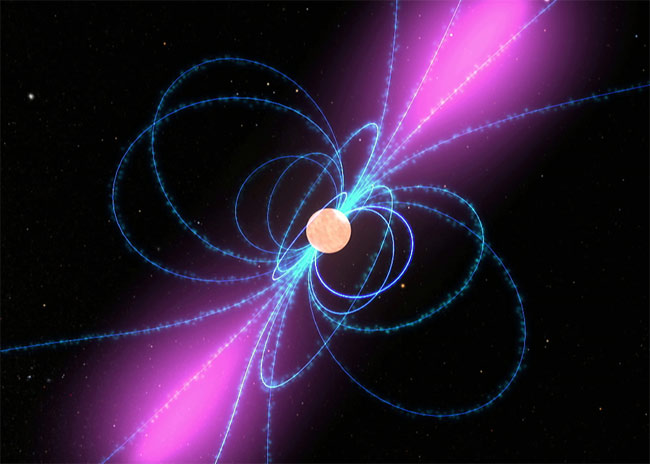
Using a NASA X-ray telescope mounted on the International Space Station (ISS), astronomers have weighed a rapidly spinning dead star that signifies the heart of the closest millisecond pulsar to Earth.
Like all neutron stars, pulsars are born when massive stars die, but what really sets millisecond pulsars apart is the fact that they spin hundreds of times per second. As they do this, beams of radiation and matter blast out of the poles of these dead stars and sweep across the universe, making pulsars akin to powerful "cosmic lighthouses."
Located around 510 light-years from Earth in the constellation Pictor, PSR J0437-4715 (PSR J0437) is the closest example of a millisecond pulsar to our solar system and the brightest example of such an object in the night sky. PSR J0437 spins 174 times a second, meaning it blasts Earth with X-rays and radiowaves every 5.75 milliseconds. These pulses are so regular that, like other pulsars, this rapid cosmic lighthouse can actually be used to keep time.
Now, scientists know the neutron star forming PSR J0437 is 14 miles (22.5 kilometers) wide and has a mass equivalent to 1.4 times that of the sun. The team also discovered the hot magnetic poles of the neutron star are misaligned and not directly opposite one another.
Related: Rapidly spinning 'extreme' neutron star discovered by US Navy research intern
To collect the new measurements of PSR J0437, the team turned to NASA's Neutron Star Interior Composition Explorer (NICER) that's connected to the ISS. They treated this X-ray data with a modeling method called "pulse profile modeling" and then created simulations of PSR J0437 using the Dutch national supercomputer Snellius.
"Before, we were hoping to be able to calculate the radius accurately. And it would be great if we could show that the hot magnetic poles are not directly opposite each other on the stellar surface," team leader Devarshi Choudhury of the University of Amsterdam said in a statement. "And we just managed to do both!"

The most extreme stars
When stars that have masses between eight and 25 times that of the sun run out of fuel, after billions of years of their existences, they can no longer perform nuclear fusion at their cores. This not only cuts off the majority of energy a star radiates, but it also stops the outward flow of radiation pressure.
Over a star's lifetime, this radiation pressure supports it against the inward pressure of its own gravity. That means, when its fuel is exhausted, the star can no longer prevent itself from undergoing gravitational collapse. As the core collapses, this process sends shockwaves through the star's outer layers, triggering a supernova explosion that rips away the majority of the star's mass. Regardless of the starting mass of the star, a resultant neutron star would be born with a much tighter range of masses, from one to two times the mass of the sun.
However, the collapse of this dying stellar core shrinks the progenitor neutron star's width to around 12 miles (20 kilometers). Consequently, the matter that comprises a neutron star is so dense that a sugar cube of it brought to Earth would weigh 1 billion tons — that's around 2,500 times the weight of the Empire State Building.

There is another consequence of the rapid shrinking of a stellar core to birth a neutron star. Because of the conservation of angular momentum, the radical radius reduction causes the spin speed of the stellar remnant to increase. This is akin to an ice skater on Earth drawing in their arms to increase the speed of a pirouette.
Neutron stars that form pulsars can also get an additional speed boost from a companion star. When the neutron star and stellar companion are close enough, the former can strip material from the latter. This stellar matter carries with it angular momentum, which further increases the neutron star's speed of rotation.
PSR J0437 may well have engaged in this stellar cannibalism in the past to reach its spin speeds of 174 rotations per second. The evidence for this is the fact that it has a helium-rich companion white dwarf star with a mass just a quarter of that of the sun, which seems to have had its outer layers removed.
While many of the measurements of PSR J0437 confirmed scientists' understanding of how these objects form, this millisecond pulsar did deliver one surprise. The mass of PSR J0437 implies to the team that the maximum mass of neutron stars could be lower than some theories currently predict.
"That, in turn, fits nicely with what observations of gravitational waves seem to suggest," team member and University of Amsterdam neutron star expert Anna Watts said.
The team's research was published in a series of pre-peer-reviewed papers on the repository site arXiv and in the Astrophysical Journal.







